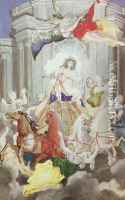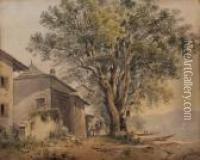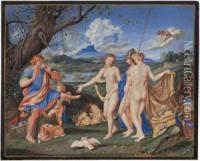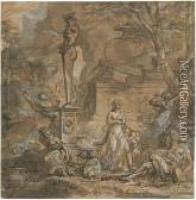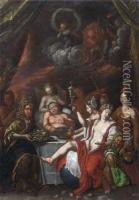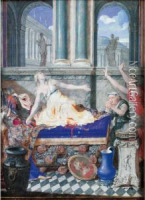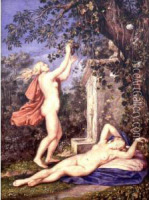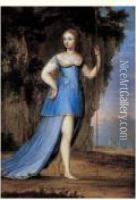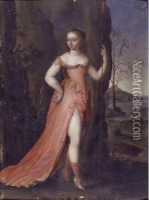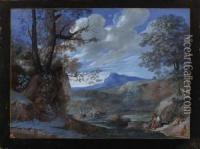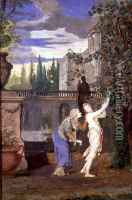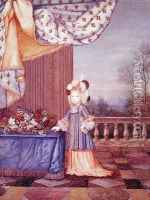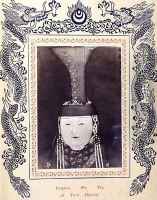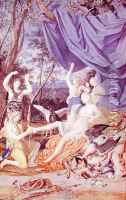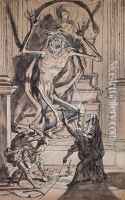Joseph Werner Paintings
Joseph Werner, also known as Joseph Werner the Elder to distinguish him from his similarly named son, was a Swiss painter and engraver born on June 23, 1637, in Bern, Switzerland. He is known for his detailed and precise baroque style and his versatility in different mediums, including miniatures and large-scale frescoes.
Werner received his early training from his father, who was a local painter. He showed great promise from an early age and was sent to study in Paris when he was only 16. In Paris, he worked under the tutelage of the French court painter Charles Le Brun. His time in Paris significantly influenced his style and technique, and he became proficient in the grand manner of the French baroque.
After spending a few years in France, Werner traveled to Rome in 1661, where he furthered his studies and worked on several commissions. His work caught the eye of the art community in Rome, and he was admitted to the prestigious Accademia di San Luca.
In 1667, Werner moved to Frankfurt and became a court painter to Johann Friedrich von Brandenburg-Ansbach. Throughout his career, he received numerous commissions from various European courts, which was a testament to his reputation as a master painter. He worked in various cities, including his hometown of Bern, where he executed some of his most famous works, such as the ceiling frescoes in the Rittersaal (Knight's Hall) at Schloss Thun.
Werner was also a skilled engraver and etcher, producing a number of fine prints throughout his career. His engravings are characterized by the same attention to detail and precision found in his paintings.
Joseph Werner's influence extended to his sons, who also became artists. His most famous son, Joseph Christoph Werner, was known as Joseph Werner the Younger. The elder Werner's legacy is evident in the way he combined the grandeur of French baroque with Italian influences, while still incorporating the Swiss taste for meticulous detail.
Werner passed away on April 28, 1710, in Bern, leaving behind an oeuvre that is appreciated for its elegance and craft. His work can be seen in various museums and collections across Europe, and his contribution to the baroque period remains significant, particularly in the context of Swiss art history.
